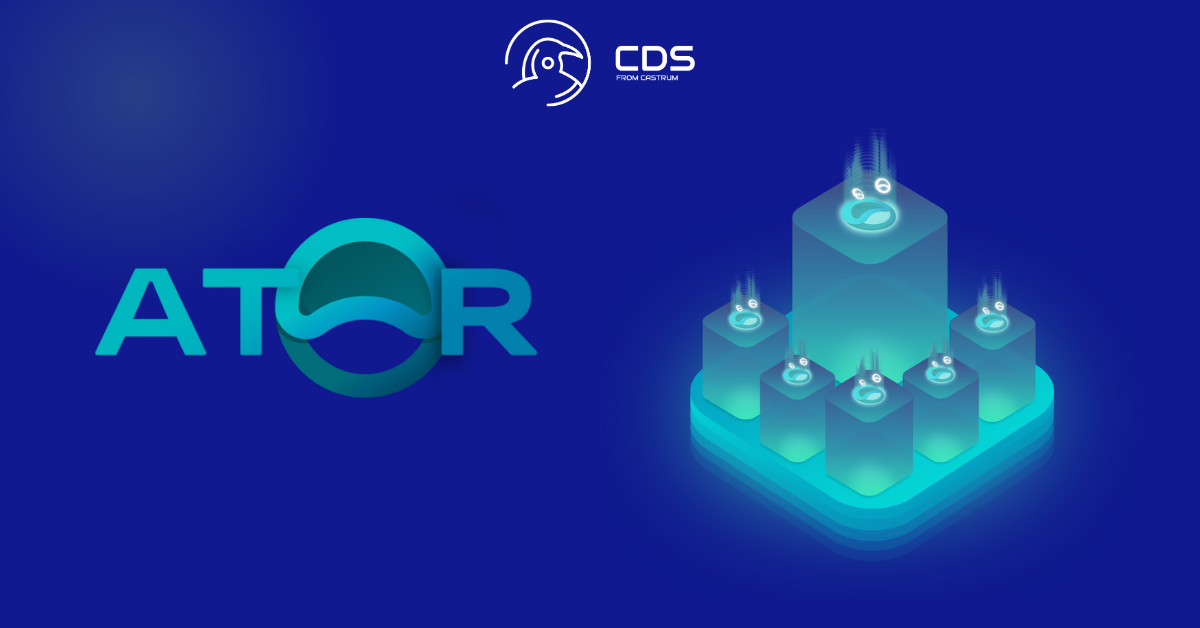ATOR Protocol: Incentivizing and Strengthening the Tor Network
ATOR directly tackles the limitations of Tor‘s existing network, which heavily relies on volunteers to sustain operations for its 2 million daily users. The predominantly altruistic model, based on a relatively small number of relays globally, has resulted in numerous challenges, including slow browsing speeds, inconsistent uptime quality, and limited scalability. Moreover, Tor’s association with the Dark Web has generated negative publicity and hindered mainstream user adoption.
The ATOR protocol introduces a solution by incentivizing the creation and maintenance of routers and relays, thereby boosting their quantity and quality throughout the network. Through the ATOR protocol, routers and relays can be built and sold using cryptocurrency payments, while nodes are rewarded for their uptime based on the on-chain Proof of Uptime mechanism. This ensures that only nodes with consistently high uptimes receive compensation, incentivizing the operation of high-quality and reliable nodes.

Furthermore, ATOR’s Proof-of-Uptime protocol motivates the establishment and upkeep of Tor relays by offering ATOR tokens as rewards. This incentivization encourages users to actively contribute to the Tor network, fostering its growth and capacity. Existing Tor nodes can be whitelisted into the ATOR Proof-of-Uptime protocol, allowing them to mine ATOR tokens without disrupting their current operations.
The project also provides relay hardware and a router designed for non-technical users, facilitating their participation in the Tor network and the mining of ATOR tokens. Built on Tor’s encryption standards, ATOR ensures complete privacy and anonymity, making it an ideal solution for those requiring scalable anonymity. Overall, ATOR aims to promote the wider adoption of secure network relay protocols and enhance the Tor network’s security through on-chain incentives.
The project has an ambitious roadmap. The launch of the ATOR ERC-20 token took place in February 2023, with a total supply of 100 million ATOR tokens, currently circulating around 63 million. While the initial node rewards may appear modest, the team has acknowledged plans to refine the reward algorithm in the future, incorporating additional sources of relay rewards.
To establish credibility, the team demonstrated a functional prototype of a Tor Router Microcontroller at EthDenver. Furthermore, the release of instructional open-source code in April 2023 aimed to instill confidence in the Tor community, showcasing the team’s expertise and trustworthiness.

The second phase of the project focuses on integrating Tor with ERC20 incentives and developing a dashboard for onboarding Tor nodes. The implementation of the Proof of Uptime concept is planned for Q3 2023. The third phase involves transitioning towards independence, with the team set to release their own router hardware and an on-chain infrastructure. The release of dedicated relay hardware is planned for Q1 2024, followed by a transition to longer-term token incentives in Q2 2024. The final phase encompasses the introduction of “ATOR Hidden Services,” enabling users to utilize web3 on the blockchain in exchange for ATOR tokens, creating a comprehensive end-to-end solution for sustainability.
The fourth and final phase focuses on absolute privacy with LoRa technology. Prototypes for “last-mile” LoRa routers are scheduled for release in Q2 2024. These dedicated hardware devices will relay packets using long-wave radio to existing relays, which then connect to the primary Tor network. Critical considerations, such as open-source router hardware and firmware built on trusted and Tor project-approved code, configurable routers, and updatable Tor browsers, are central to the project’s success. The routers need to be powerful, reliable, and affordable, and community involvement is crucial for ATOR’s achievements.
ATOR has the potential to be a game-changer for the Tor network and its users, providing faster browsing speeds, improved reliability, and enhanced privacy for all users. With the launch of ATOR, the development team anticipates a surge in Tor network adoption by mainstream users valuing their online privacy and security.
















Leave a comment